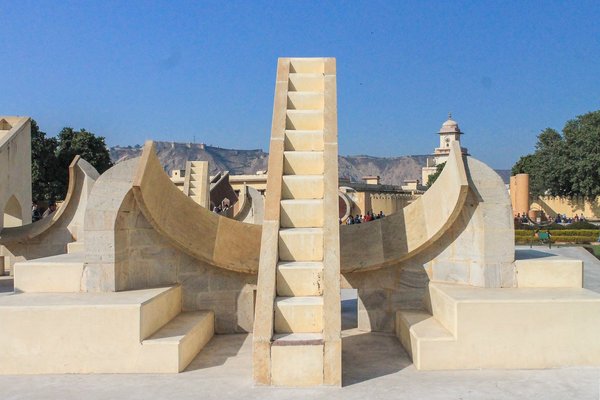India
Jantar Mantar
The Jantar Mantar, Jaipur is a collection of large architectural astronomical instruments.
They were built in the new state capital of Jaipur in the early 18th century on the orders of Prince Jai Singh II. He had constructed a total of five such facilities at different locations, including one in Delhi. The Jaipur observatory is the largest and best-preserved of these. It followed the tradition of Ptolemaic positional astronomy and was designed to observe the sky with the naked eye.
Community Perspective: a haven of quiet from the bustling city outside, but it is quite hard to work out how the various instruments worked except for the huge sundial. The separation of this location from the also inscribed Jaipur City seems rather artificial.
Site Info
Official Information
- Full Name
- The Jantar Mantar, Jaipur (ID: 1338)
- Country
- India
- Status
-
Inscribed 2010
Site history
History of Jantar Mantar
- 2010: Advisory Body overruled
- ICOMOS advised Referral (Management Plan issues)
- 2010: Inscribed
- Inscribed
- Type
- Cultural
- Criteria
- ii
- iv
- vi
Links
- UNESCO
- whc.unesco.org
- Related
-
- jantarmantar.org — Jantar Mantar.org
- en.wikipedia.org — Wiki
All Links
UNESCO.org
- whc.unesco.org — whc.unesco.org/
Related Resources
- jantarmantar.org — Jantar Mantar.org
- en.wikipedia.org — Wiki
News Article
- June 15, 2009 timesofindia.indiatimes.com — Jaipur's nomination dossier was accepted as complete and is under review by Unesco
- March 26, 2009 timesofindia.indiatimes.com — Five astronomical observatories in Delhi, Jaipur, Varanasi, Ujjain and Mathura have been put on India's Tentative List
Community Information
- Community Category
- Secular structure: Science and Education
Travel Information
Exact locations inscribed twice (or more)
Recent Connections
-
Foreigner prices
50 rs for Indians, 200 for Foreign Tour… -
Astronomy and Astrology
It is a collection of astronomical inst… -
Built in the 18th century
1727 - 1734
Connections of Jantar Mantar
- Trivia
- History
-
-
Mughal Empire
"The Jantar Mantar in Jaipur is an outstanding example of a very comprehensive set of astronomical instruments, in the heart of a royal capital at the end of the Mughal period in India." (OUV)
-
- World Heritage Process
-
-
Exact locations inscribed twice (or more)
Jantar Mantar lies within core zone of Jaipur City
-
- Constructions
-
-
Sundial
The Giant Sundial, known as the Samrat Yantra (The Supreme Instrument) is the world's largest sundial, standing 27 meters tall
-
- WHS on Other Lists
-
-
Global Heritage Fund
Threat level: rescue needed -
World Monuments Watch (past)
Jantar Mantar (2008)
-
- Timeline
-
-
Built in the 18th century
1727 - 1734
-
- Science and Technology
-
-
Astronomy and Astrology
It is a collection of astronomical instruments
-
- Visiting conditions
-
-
Foreigner prices
50 rs for Indians, 200 for Foreign Tourists
-
News
- timesofindia.indiatimes.com 06/15/2009
- Jaipur's nomination dossier was ac…
- timesofindia.indiatimes.com 03/26/2009
- Five astronomical observatories in…
Recent Visitors
Visitors of Jantar Mantar
- AC
- Adrian Turtschi
- Afshin Iranpour
- akacesfan
- Alberto Rodriguez Gutierrez
- Alexander Barabanov
- Alexander Lehmann
- Alexander Parsons
- Alex Marcean
- AlexSchedel
- Alikander99
- Ali Zingstra
- Allegrazwindow
- A. Mehmet Haksever
- Ammon Watkins
- AmyAbroad
- andyng-site
- Anna Wludarska
- Artur Anuszewski
- ashombob
- Aspasia
- Atila Ege
- Bamse
- Bernard Joseph Esposo Guerrero
- Bill Maurmann
- Bin
- BMuramatsu
- Boj
- Brendan Carroll
- campmany
- Carlo Medina
- Carlo Sarion
- Chalamphol Therakul
- Chantal den Haan
- Cheryl
- Chinmaya
- Chole Ross
- Christravelblog
- Claire Bradshaw
- Clyde
- Cyberczar
- CynthiaSam
- Daniel Gabi
- David Marton
- Dimitar Krastev
- Elis
- Elisabeth Fransisca Situmorang
- Els Slots
- Erfe91
- Fede1203
- Felicité
- Filip Murlak
- Frederik Dawson
- Garrett
- George Gdanski
- GerhardM
- Grzegorz Andruszkiewicz
- Hadrianus
- HaraldOest
- Harald T.
- H Beswick
- Hdhuntphotography
- Iain Jackson
- Ivan Rucek
- Jacob Choi
- Jacob Otten
- Jakubmarin
- Jana and Matt
- janis
- Janos
- Jan-Willem
- Jarek Pokrzywnicki
- Javier
- Javier Coro
- Jean Lecaillon
- Jeanne OGrady
- Jeffrey Chai
- Jezza
- J_neveryes
- Joel on the Road
- John Smaranda
- jonathanfr
- Jon Opol
- Jonoprout
- Joyce van Soest
- jxrocky
- Karito Vies
- KateY
- KeithBailey
- Ken DJ
- Kerékgyártó
- Kevin McFarland
- kiank37
- Knut
- ko9757
- Kurt Lauer
- Lado Joel
- Lara Adler
- Laurine
- LaVale
- Lembu
- Liamps91
- lichia
- Little Lauren Travels
- Loic Pedras
- Lucas Del Puppo
- Lucio
- Ludvan
- Luis Filipe Gaspar
- Lukasz Palczewski
- Luke LOU
- Maciej Gil
- Maciej Gowin
- Malgorzata Kopczynska
- marcel staron
- Martin
- Martina Rúčková
- Marton Kemeny
- maryhattie
- Matthewrw
- Matthewsharris
- MaYumin
- Michael Novins
- Michael Turtle
- Mikko
- Miloš Tašković
- Mkandasa
- MMM
- Monica Tasciotti
- MoPython
- Morodhi
- Naim Y
- nan
- Nihal Ege
- Olli-Pekka Turunen
- PabloNorte
- Patrik
- Patrik_globe
- Paul Schofield
- Petteri
- Philipp Leu
- Philipp Peterer
- phillipmeng
- Pink Bunny
- Potsdamer
- Pradip Tripathy
- Priyaranjan Mohapatra
- RainbowMarbles
- Ralf Regele
- Randi Thomsen
- Reisedachs
- Riccardo Quaranta
- Rick Ohm
- Rob Wilson
- Roman Bruehwiler
- S. Anril Tiatco
- Sergio Arjona
- Shandos Cleaver
- Simonf
- Solivagant
- Stanislaw Warwas
- Svein Elias
- Szabolcs Mosonyi
- Szucs Tamas
- Tamara Ratz
- Tammy Gouldstone
- Taotao Chen
- Tarquinio_Superbo
- Tevity
- Thanneermalai L
- TheTravelingRanger
- Thomas van der Walt
- Tim Allen
- Timonator
- Timothy C Easton
- tony0001
- Tony H.
- Truls Brekke
- Twobaconsandaboston
- Vernon Prieto
- Vincent Cheung
- V&M
- voyager
- Waxwing
- Wojciech Fedoruk
- Wo_ko
- Xiquinho Silva
- Zoë Sheng
- Zos M
- Zsuzsanna Forray
- ZZSong
Community Reviews
Show full reviews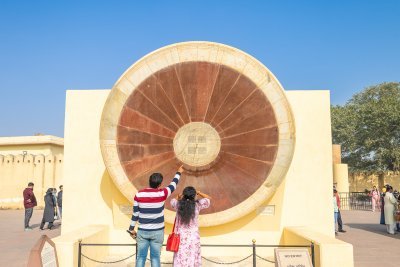
Jantar Mantar in Jaipur is an 18th-century observatory built to study the sky with the naked eye (yep, no telescopes). It's a small, accessible, and quite straightforward site to visit, and you get to tick both this site and Jaipur in one go. I visited Jantar Mantar twice (Dec 2013 and Dec 2023) and spent no more than an hour on both visits.
1. A UNESCO site within a UNESCO site
I used to share the opinion that Jantar Mantar as a separate site from Jaipur seemed confusing. I mean, it is well within Jaipur City’s core zone and is an integral part of the city palace’s compound. However, Jantar Mantar as a separate site has its own merits, and as I see it, India intended it that way. Its OUV rests on being an excellent example of an 18th-century architectural ensemble of scientific and technical instruments. It is also a testament to the monarch's (Jai Singh II) patronage of astronomy and cosmology, and sort of a reflection of the rich artistic and scientific culture at the time. It also fills the gap in heritage sites that are devoted to astronomy (see ICOMOS Thematic Study on Astronomical Heritage in 2010). Jaipur City’s focus is obviously way different. I reckon its separation from Jaipur City does not make Jaipur’s OUV anything less, and vice versa, and that they can stand on their own.
2. Highlights
Jantar Mantar has some 20 instruments crafted with seemingly geometric precision.I took …
Keep reading 0 comments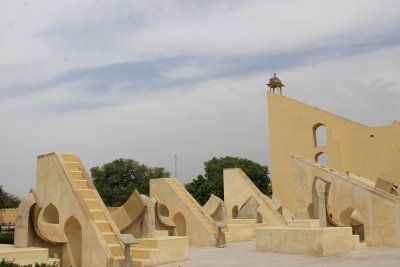
I agree with the general sentiment that jantar Mantar is a confusing nomination.
Foremost, it's Right in the middle of jaipur old city. So it's hardly justifiable to make it a whs on its own. This is a clear case of duplication, something I've found India is particularly adept at.
Furthermore, the site is quite hard to interpret at the moment, with very simple and lackluster explanations.
The there's the OUV. The instruments though certainly monumental, weren't that advanced for the time, and in fact their size is somewhat unjustified. The astronomers in charge of the project weren't adept at architecture and the soil has given up under the heavy weight of their sun dials making the instruments unprecise. all in all I would say jantar Mantar is more of a unique expression of the science of astronomy in India. In that sense it is truly remarkable and unique (though a few more jantar Mantar exist in other Indian cities, like Delhi) and I'm happy it's part of the list.
The visit is short and pretty ordinary. Though the giant sun dial makes for great photos.
Keep reading 0 comments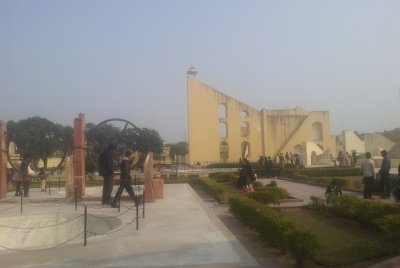
Jantar Mantar, what a weird name? When I traveled to Jaipur, I didn't really know what to expect. The name sounds more like a joke than something real.
What I found is one of those niche jewels of the world heritage list: an Indian observatory based on architectural astronomical instruments. The architectural part is key here as there were little mechanics or optics involved. Instead, you have the world's largest sundial being able to measure time by 2s due to its size. In comparison the Royal Observatory in Greenwich is tiny.
Interestingly, the site is limited to the observatory. India has in the meantime submitted Jaipur (T) itself as a separate site. The community feedback is rather positive, but to me combining Jaipur and the Jantar Mantar would yield a truly great site and the separation seems rather artificial.
Getting There
I flew in from Bangalore in the morning. I left the next morning on the train to Agra.
A popular tourist option is to do the golden triangle (Delhi, Agra, Jaipur) from Delhi with a driver. You will find plenty of offers for this online.
While You Are There
As mentioned, Jaipur City is a tentative site itself and nominated for 2019. Not to be missed Amer Fort is part of the Hill Forts of Rajasthan world heritage site.
Keep reading 0 comments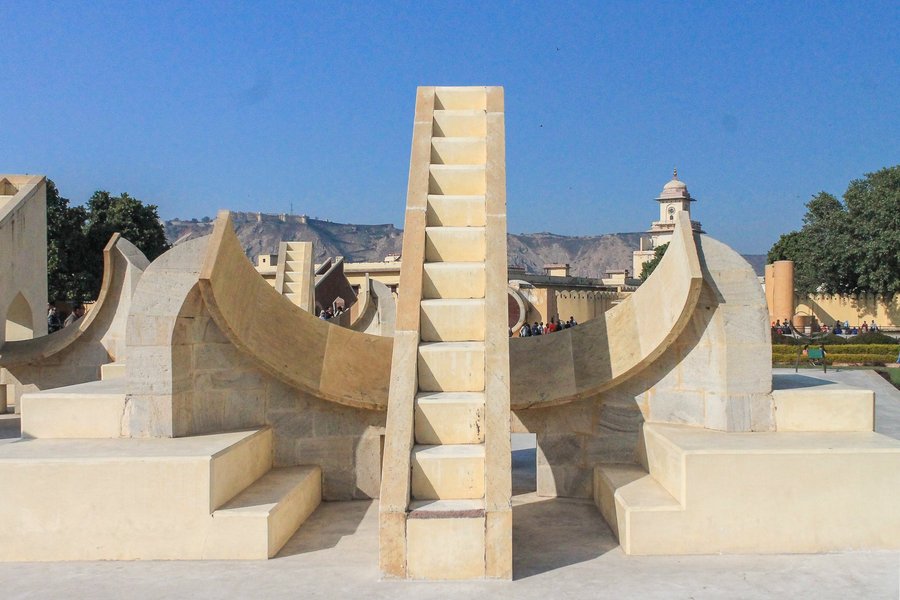
Truly miraculous janta mantar in jaipur I visited in November 2014. It still shows the correct time the sun dial and yes my little knowledge of astrology also helped me to understand the planetary positions depicted in jantar mantar.
Keep reading 0 comments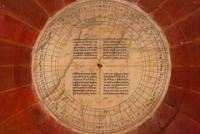
I visited this WHS in January 2012. This astronomical observation site in Jaipur includes several astronomical instruments of the Mughal period. Quite interesting to visit in the middle of the Pink City.
Keep reading 0 comments
My last visit to the Jantar Mantar at Jaipur was as long ago as 1992 so the accompanying photo has had to be scanned in from a 35mm slide!! But I remember the visit, and indeed the entire stay in Jaipur with pleasure. This is a worthy addition to the list and a visit to Jaipur will bring in many other fine sights too!
India’s Tentative list entry for this site originally listed the existing 4 Jantar Mantars for potential inscription (Jaipur, Delhi, Varanasi and Ujjain – a fifth at Mathura no longer exists) but must have concluded that it was better to concentrate on that at Jaipur. They were all built by Jai Singh, “a regional king under the Mogul Empire”, between 1724-7. Jaipur’s is the largest and, as I remember the one in Delhi many years ago, the better preserved/restored – though the small one in Varanasi situated atop a building is also rather fine and I have never been to Ujjain. They all provide a haven of quiet from the bustling city outside within a walled “park” containing a series (Jaipur has 14) of large (the biggest at Jaipur is 27m tall) and complicated-looking astronomic instruments, known as “Yantras” , each designed to measure some aspect of the passage of heavenly bodies – determining time, predicting eclipses, placing planets etc. My photo is of the “Jai Prakash” – a hemispherical sundial said to be Jai Singh’s “most elaborate and complex instrument”. I would not claim, either at …
Keep reading 0 comments
